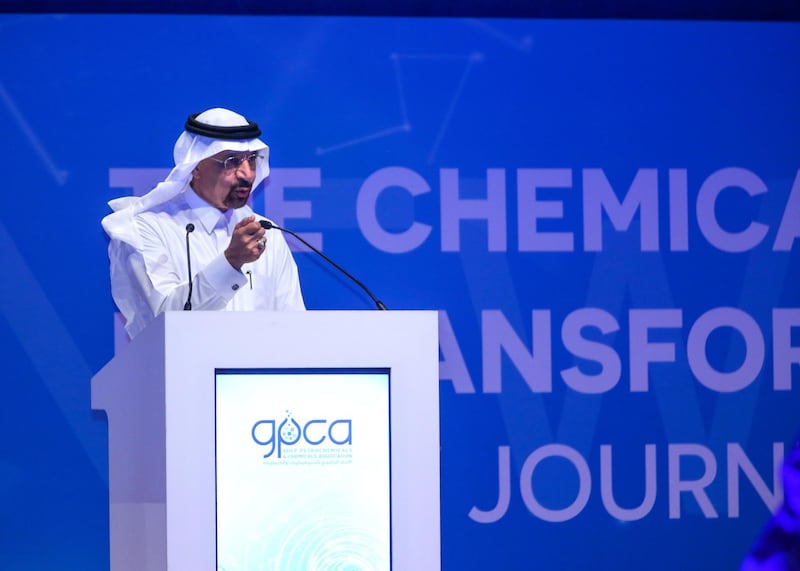The Arabian Gulf petrochemicals industry should maximise conversion rates of crude oil to chemicals to match producers in the US by 2030, Saudi Arabia's minister of oil Khaled Al Falih urged industry representatives at a forum in the UAE.
“The region locally consumes only about 18 per cent of our oil production for conversion into higher value products and more than 82 per cent is exported,” he told delegates at the Gulf Petrochemicals and Chemicals Association (GPCA) forum in Dubai.
“This compares to only one-third of commodities being exported by the US and two-thirds being converted to higher value products. I urge you, our industry leaders, to match the US conversion rates by 2030,” he added.
Revenues derived from specialty chemicals for Middle East producers account for just one per cent of the world’s total, compared with 20 per cent for western Europe. The Middle East also accounts for only three per cent of value-added chemicals, unlike the US, which amounts for nearly a quarter of global output.
The Middle East, led by the world’s largest oil producer Saudi Arabia, accounts for around 35 per cent of the world’s crude production, but much of the commodity finds its way into export markets.
Since the slump in oil prices, which saw the price of Brent fall from US$100 highs in 2014 to as low as $27.88 per barrel in early 2016, Gulf producers have accelerated development of an integrated downstream industry with plans for petrochemicals production. Along with the decline in oil prices, the price of naphtha - an important chemicals feedstock - has declined in parallel, driving plans for mega-petrochemical projects in the region.
___________
Read More:
S&P raises 2018 Brent oil price forecast on ongoing cuts and strong demand
Saudi Arabia Says OPEC Should Extend Cuts in Meeting This Month
___________
On Sunday, oil and chemicals giants Saudi Aramco and Sabic signed an agreement to build the world’s largest oil-to-chemicals plant on the western Red Sea coast of Saudi Arabia. The planned project, valued at $20 billion, will process 400,000 barrels per day (bpd) of crude to produce around nine million tonnes annually of chemicals and base oils. The joint venture is targeting a 2025 start-up for the project - a timeline adopted by other oil producers in the region looking to ramp up production of higher-value petrochemicals targeted at markets in Asia.
“Despite its commodity leadership position in oil and gas leadership and production, our region here in the Gulf can claim only 2 per cent of the world’s $4 trillion a year in chemicals revenue, including all the branches of downstream value addition, largely because of our limited position in higher and value-added products,” said Al Falih.
“The unit value of plastic product exports per kilogram is also significantly lower for our region compared to other regions underscoring our need to move to high-end value products. We also know that the chemicals sector in the US and Europe are the most powerful engines of industrialisation, economic diversification and employment creation,” he added.
Advancement of petrochemicals projects forms part of Saudi Arabia’s strategy for industrial diversification, adopted under its Vision 2030 economic transformation plan.
The Saudi petrochemicals industry, which is the largest in the region, generated around $30bn in export revenues in 2015, amounting to around 60 per cent of total non-oil exports.
State-owned Saudi Aramco has also ventured into the downstream and chemicals sector through its venture with US multinational Dow Chemicals, through the $20bn Sadara Chemical Company in the eastern Jubail Industrial City, which is set to produce around three million tonnes annually of plastics and speciality chemical products.
To expand the role of the chemicals sector in the Saudi economy, the kingdom is also considering the creation of a Saudi Export Import Bank, added Al Falih.
“We have already increased the capital of the National Industrial Development and Logistics Programme from 40 to 60bn Saudi riyals [Dh11-16bn] and set in motion the creation of a Saudi Export Import Bank,” he said.
The programme targets raising the contribution of industrial sectors including petrochemicals from around 500bn to 1.7tn riyals by 2030.







